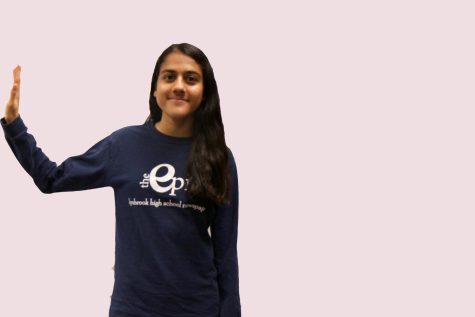New changes modify science fair regulations
September 28, 2017
The Lynbrook science department announced a 30-project limit for Synopsys Science Fair projects on Sept. 7 to comply with the new rule imposed by Synopsys and to increase the overall quality of submitted projects. This limit also applies to students who have conducted research for Regulated Research Institutions (RRI) projects, which are conducted at universities or companies and are usually supervised. Students from the STEM research class are guaranteed Lynbrook mentorship and their projects do not count toward the limit.
Lynbrook required students to submit a proposal for science fair projects last year as well; however, this year, a project limit is being imposed by Synopsys. The number of proposals accepted will be cut down from approximately 42 last year to the limit of 30. The Synopsys science fair is volunteer based, and with the large number of projects sent in by Bay Area schools, this limitation will likely ensure higher project quality. The stricter regulations introduced last year did improve the quality of projects, and also resulted in fewer projects being proposed.
“Students have been putting in more effort in terms of their background research, their literature reviews and seeing if their project is feasible and unique,” said science teacher Jason Lee. “Fewer people feel like they can just submit whatever they felt like, which is probably why the number of proposals dropped to about 50 last year.”
Interested students are required to submit a project proposal as well as responses to four informational questions; the main criteria used to judge these proposals are following directions, thoroughness, feasibility in the context of school safety standards, originality and the support available from teachers. Project proposals are reviewed by a panel of teachers willing to mentor students, with each teacher taking on anywhere from 1 to 4 projects. Since teachers may not have expertise in certain research topics, the school has considered inviting parents who specialize in these particular fields to review the proposals and become volunteer coaches and mentors.
“We have a lot of very talented, skilled, intelligent parents in this community that know a lot of things that we as teachers are missing, like industrial knowledge,” said Lee. “Depending on how many proposals we have, we’ll see if we want to bring in parents this year.”
While the limit can have a positive effect on individual projects, it has raised concerns about the fairness of the system, as students newer to the science fair process may be at a disadvantage in the selection process.
“I think the 30 project limit makes it easier for teachers to mentor students one-on-one which is always better because you can get more advice and help on your project,” said senior Vivian Huang, who participated in the Synopsys fair last year. “A disadvantage is that Synopsys is a starting point for many students that are looking to do science fairs for the first time, and [the limit] might discourage them.”
The most important factors in the selection process, according to Lee, are the students’ drive and their personal engagement with their project combined with how it translates onto paper, which doesn’t mean the project itself has to be too advanced.
“It may feel harder for underclassmen because they feel like they have to compete with all of these students who’ve done science fair and STEM for years and have done multiple projects,” said Lee. “Going through the process of the project proposal is valuable even if you’re rejected because you’ll see how much is necessary in order for your project to be fully vested in terms of its background and originality. I would hope that people don’t feel discouraged by that, but instead understand that [the process] is as important as doing the project.”
If a project is not selected to receive Lynbrook sponsorship, students may continue to work on it by contacting lab spaces outside of school, including local universities. Students interested in participating in the Synopsys science fair without Lynbrook mentorship can contact public science spaces, such as Schmahl Science in San Jose, to sponsor the project, while students more interested in simply researching the project can consider pitching it to local universities and working in their labs.
While the fewer number of projects will inevitably make the process more competitive, Lee hopes this will encourage students to flesh out their projects and spend more time ensuring that they show higher rationale and a clear understanding of the topic at hand.
“We have a school of passionate students in STEM, but we need to corral some of that passion into things that they are able to put down on paper, which requires thoroughness, ethics and diligence,” said Lee. “We’re looking for people who are really exemplifying true science and engineering.”



































































